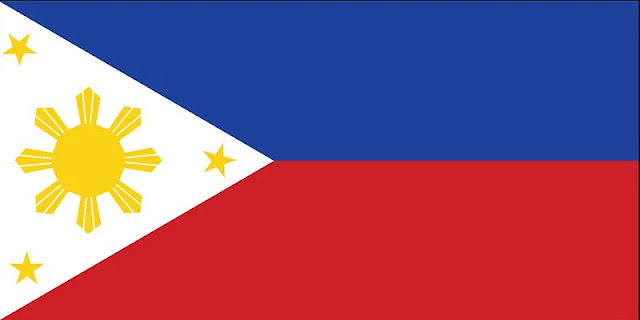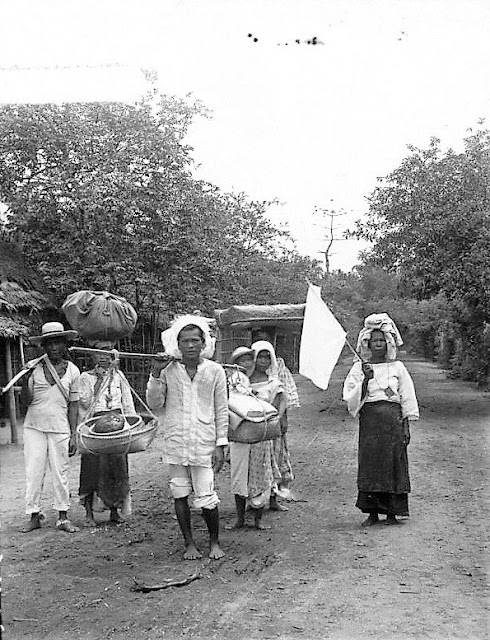Our True Colors -- Our Flag
A Legacy of Resistance --The Enduring Symbol of Our Flag
We frequently encounter old photographs depicting Filipinos at the turn of the 20th century, clutching white flags. This era, marked by American control over much of Luzon, saw the indigenous population – young and old alike – under constant suspicion of insurgency. The white flag served as a desperate plea, signifying their noncombatant status and intent to simply go about their daily lives. However, American soldiers subjected them to searches nonetheless.
Examining the history of Filipinos and their flags reveals a deep-seated connection. As early as the American arrival in Manila Bay in 1898, the US Expeditionary Force bristled at the sight of Filipinos proudly displaying their national emblem. Reports documented small civilian fleets and bancas adorned with Philippine flags dotting the waters around Manila Bay, prompting the Americans to confiscate many of them.
This aversion to national symbols culminated in the passage of a restrictive law under American rule. Act 1696, also known as the Flag Act, outlawed the display of Katipunan flags, emblems, and other symbols within the American-controlled Philippine Islands. The act was specifically enacted in 1907 to suppress displays associated with the Katipunan.
The path to freely waving the flag we know today was arduous and lengthy. Years passed before Filipinos could cast aside the white flag and finally raise their true colors, their authentic emblem of national identity.
Deconstructing the Symbolism
The Philippine flag, with its equilateral triangle, carries a rich tapestry of meaning. The triangle's association with Freemasonry is undeniable. Each corner, adorned with a star, embodies the trinitarian concept found across numerous philosophies and religions. These stars further represent the unity of the three island groups – Luzon, Visayas, and Mindanao – that collectively comprise the Philippines. Additionally, they echo the powerful French Revolutionary motto, "Liberté, égalité, fraternité" (Liberty, equality, fraternity), a sentiment frequently invoked by revolutionary leader Emilio Aguinaldo.
Delving deeper into trinitarian symbols, we encounter the standard of Andres Bonifacio's Katipunan, with its three "KA" prefixes signifying the "Kataastaasan, Kagalanggalang na Katipunan ng mga Anak ng Bayan" (The Most High, Most Respected Society of the Sons of the Nation).
The flag's three colors are equally symbolic. White signifies the egalitarianism aspired to by Philippine society, blue represents the nation's unwavering commitment to peace, and red embodies the courage and valor displayed throughout its history. The eight rays of the stylized sun symbolize the eight provinces that spearheaded the uprising against Spanish rule. This solar motif also draws inspiration from Freemasonry's "eye of providence."
These interwoven symbols all point back to a pivotal movement that swept across Europe in the 18th century – the Age of Enlightenment. It was this emphasis on reason, logic, and individual freedoms above established institutions, like the Church, that ignited the flames of revolution. The Enlightenment's ideals spread throughout Europe, finding fertile ground in Spain and its American colonies under the moniker "Ilustracion." This intellectual movement birthed the "Ilustrados," enlightened Filipinos whose ideas, much like those of José Rizal and Marcelo H. del Pilar, were often deemed heretical and filibusterous by the Spanish authorities and clergy.
Filibusterismo
Shifting our focus to 1896, we find a new chapter unfolding in the fight for Cuban independence. The early months of that year witnessed a significant disruption to Cuban commerce, particularly within the lucrative sugar industry. This economic upheaval prompted countries like the United States and England to turn to sugar-producing nations like the Philippines to fill the void. While Manila's commerce flourished due to this shift in global trade, it also fostered a growing awareness of the liberation movements brewing in Cuba and Puerto Rico. Manila newspapers brimmed with updates on events unfolding in the Caribbean throughout the 1890s. Interestingly, it wasn't until decades later that Manila residents became privy to news about events transpiring on the opposite side of the Spanish empire. Yet, one word resonated deeply within these narratives – "Filibusterismo."
The term "Filibusterismo," with its Cuban origins predating this pivotal decade, carries a deeper meaning than the one often associated with Rizal's novel. While the novel undoubtedly cemented the word in the Philippine consciousness, it compels us to explore how the concept of "Filibusterismo" evolved and why it seemingly faded from our national narratives.
The 1840s witnessed a group of Cuban exiles in the United States supporting a clandestine plan to liberate Cuba, orchestrated by disillusioned former officers within the Spanish colonial army.
Branded "Filibusteros," these rebels imbued the term with a profound sense of defiance. As investigations unfolded, a surprising connection emerged – both the exiles and the Spanish officers shared a common bond: Freemasonry.
The Propaganda Movement in Spain became acutely aware of the Cuban fight for independence. Newspaper accounts and vivid imagery of the war proliferated in leading Spanish cities like Madrid and Barcelona, which were already fertile ground for anarchist thought, particularly the ideas of Pierre-Joseph Proudhon. Meanwhile, whispers of a surge in Freemasonry recruitment swirled through Manila, attracting both those deemed heretical and advocates of rebellion – the "herejes" and "filibusteros." This clandestine activity unsurprisingly led to the swift suppression of Rizal's reformist organization, "La Liga," by the ever-wary Spanish colonial authorities.
Spain's precarious situation intensified when the Cuban struggle for independence spiraled out of control. In a desperate attempt to quell the rebellion, they deployed General Valeriano Weyler, whose brutal tactics in the said Caribbean island had earned him the chilling sobriquet "the butcher." Filipinos recognized this name with a mixture of dread and a chilling sense of familiarity (being a former Governor General of the Philippines), as news and imagery of the Cuban conflict became pervasive in Manila's daily discourse.
This raises a captivating hypothetical: what if Rizal had found himself in Cuba during this period? While the answer remains veiled in the mists of time, one fact is undeniable: Spain, stretched thin by these concurrent conflicts on two continents – "two Joses, two wars" – was undeniably weakened. This ultimately contributed to its relegation to a secondary power on the world stage as the 19th century drew to a close.
When the mantle of national identity fell upon Emilio Aguinaldo, the Philippine flag he championed embodied the nation's aspirations. The equilateral triangle and its colors resonated with the ideals of the Enlightenment – reason, logic, and individual freedoms. However, there's also a hint of the audacious spirit embodied in Rizal's "Filibusterismo," the valor of Bonifacio and the Katipunan and perhaps also drawing inspiration from outside events like the French revolution or the Cuban struggle for independence.
Raise this flag with unwavering pride! It stands as a testament to our nation's unwavering pursuit of justice, peace, and the right to self-determination.
 |
| The Official standard and colors of the Philippines |
 |
| A tattered Philippine Flag identified with Aguinaldo |


.png)


Comments
Post a Comment